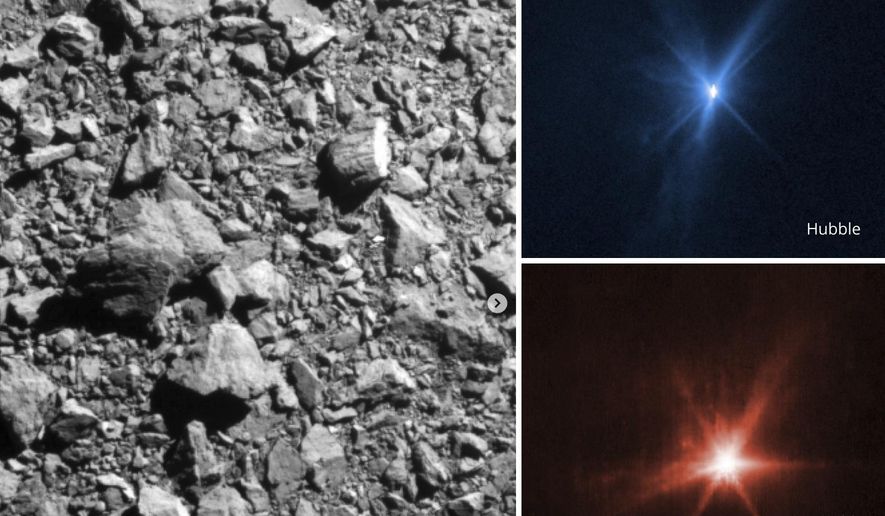CAPE CANAVERAL, Fla. — The world now has stunning new photos of this week’s asteroid strike, the first planetary defense test of its kind.
NASA on Thursday released pictures of the dramatic event taken by the Hubble and Webb space telescopes.
Telescopes on all seven continents also watched as NASA’s Dart spacecraft slammed Monday into the harmless space rock, 7 million miles (11 million kilometers) from Earth, in hopes of altering its orbit.
Scientists won’t know the precise change until November; the demo results are expected to instill confidence in using the technique against a killer asteroid headed our way one day.
“This is an unprecedented view of an unprecedented event,” Johns Hopkins University planetary astronomer and mission leader Andy Rivkin said in a statement.
All these pictures will help scientists learn more about the little asteroid Dimorphos, which took the punch and ended up with a sizable crater. The impact sent streams of rock and dirt hurling into space, appearing as bright emanating rays in the latest photos.
The brightness of this double asteroid system - the 525-foot (160-meter) Dimorphos is actually the moonlet around a bigger asteroid - tripled after the impact as seen in the Hubble images, according to NASA.
Hubble and Webb will keep observing Dimorphos and its large companion Didymos over the next several weeks.
NASA and SpaceX on Thursday announced a feasibility study to see if a private crew potentially led by a billionaire could launch to Hubble to a higher, life-extending orbit.
“We’re working on crazy ideas all the time,” said NASA’s science mission chief Thomas Zurbuchen.
The $325 million Dart mission was launched last year. The spacecraft was built and managed by Johns Hopkins’ Applied Physics Laboratory in Laurel, Maryland.




Please read our comment policy before commenting.